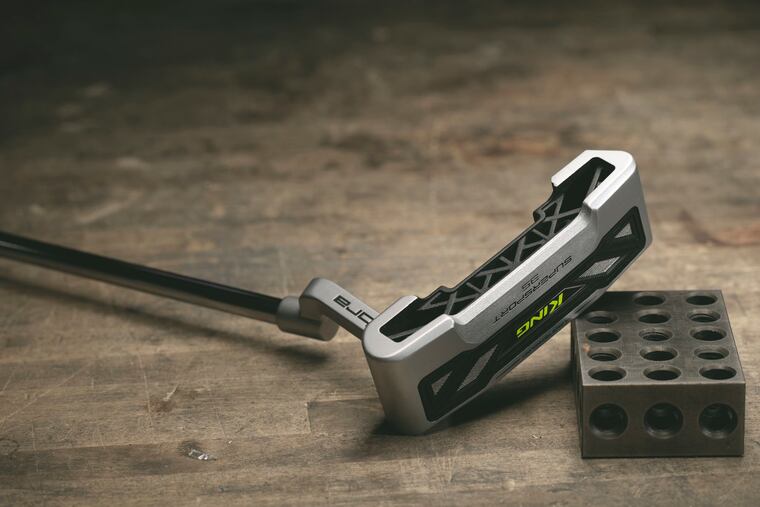Cobra Golf teams up with HP to take a swing at selling 3D-printed putter
Carlsbad, Calif.-based Cobra Golf has teamed up with Hewlett Packard to launch new a 3D-printed putter.

3D Printing has been around in the golf industry for years. But the technology hasn’t been used to mass-produce clubs. It is mostly relegated to making internal prototypes — especially at the large golf brands.
Now Carlsbad, Calif.-based Cobra Golf has teamed up with Hewlett Packard to launch new a 3D-printed putter using HP's Metal Jet technology that's not just a prototype. It is being sold to the public.
After two years of behind-the-scenes work, Cobra and HP last week announced the King Supersport-35. It uses an intricate lattice structure to distribute weight across the entire clubhead, which Cobra says would be difficult to replicate using forged- or casting-based manufacturing.
Cobra claims the redistribution of weight makes the putter more forgiving when golfers miss the sweet spot.
"The lattice design allows us to take the weight out of the middle and spread it out," said Ryan Roach, senior principal innovation engineer at Cobra-Puma Golf. "That enables us to get an increase in performance."
The King Supersport-35 sells for $399, which is a premium price for a putter. It will be offered in “very limited quantities” online only at cobragolf.com.
“This one is going to be low volume,” Roach said. “That was by design. We are stress-testing the system here.”
Still, Cobra and HP said they're working on a multi-year product roadmap that would make 3D printing "a significant element in future Cobra golf clubs." Cobra plans to launch two additional products in 2021 that feature 3D printing technology.
"With golf, at one point most of the clubs were made in the U.S. or developed world," said Uday Yadati, global head of HP's Metal Jet printing business. "But over the last 20 years, most of it has moved to Taiwan or China. What is interesting if you look at this putter, even though it is a limited edition and was positioned as a premium product, it is made in the U.S."
Yadati said complex designs enabled by 3D printing could pave the way for additional golf club production to move back to North America.
"The ability to put mass where you want it, the ability to do lightweight things," he said. "It is more engineering-oriented manufacturing versus labor-oriented manufacturing."
The two companies started talking a couple of years ago after Cobra's Carlsbad design team toured HP's inkjet research lab in Rancho Bernardo.
“We started penciling out business cases — how much is it going to cost, what can we do and what can’t we do?” Roach said. “That led to this partnership where two years later we have gotten to the point where we have a product to sell and are excited about the future.”
While HP's San Diego lab does not make Metal Jet or other printers, the site is the company's research center in fluid chemistry and bonding agents.
The stainless-steel putters are printed by HP's manufacturing partner, Petaluma-based Parmatech. They feature an aluminum face insert designed in partnership with Florida-based SIK Golf.
Cobra isn't the only golf company interested in 3D printing. Carlsbad's Callaway Golf is working with Australia-based Titomic to explore the technology. TaylorMade Golf, also of Carlsbad, uses 3D printers from Formlabs on prototypes. A handful of smaller companies have introduced 3D printed clubs for sale over the years.
Golf is considered a good candidate to help bring 3D printing into the mainstream because core golfers are willing to pay for clubs that help them hit the ball farther and straighter.
Moreover, the industry already has a history of customization. Fittings attempt to match things like clubhead weight and shaft flexibility to an individual golfer's swing.
While the business model isn't there yet, 3D printing has the potential to bring customization to a new level. Clubheads could be designed specifically to fit an individual golfer's swing and printed in a color of the golfer's choosing without retooling the factory floor.
“More and more customization and an industry of one — that is the Holy Grail here,” Yadati said.